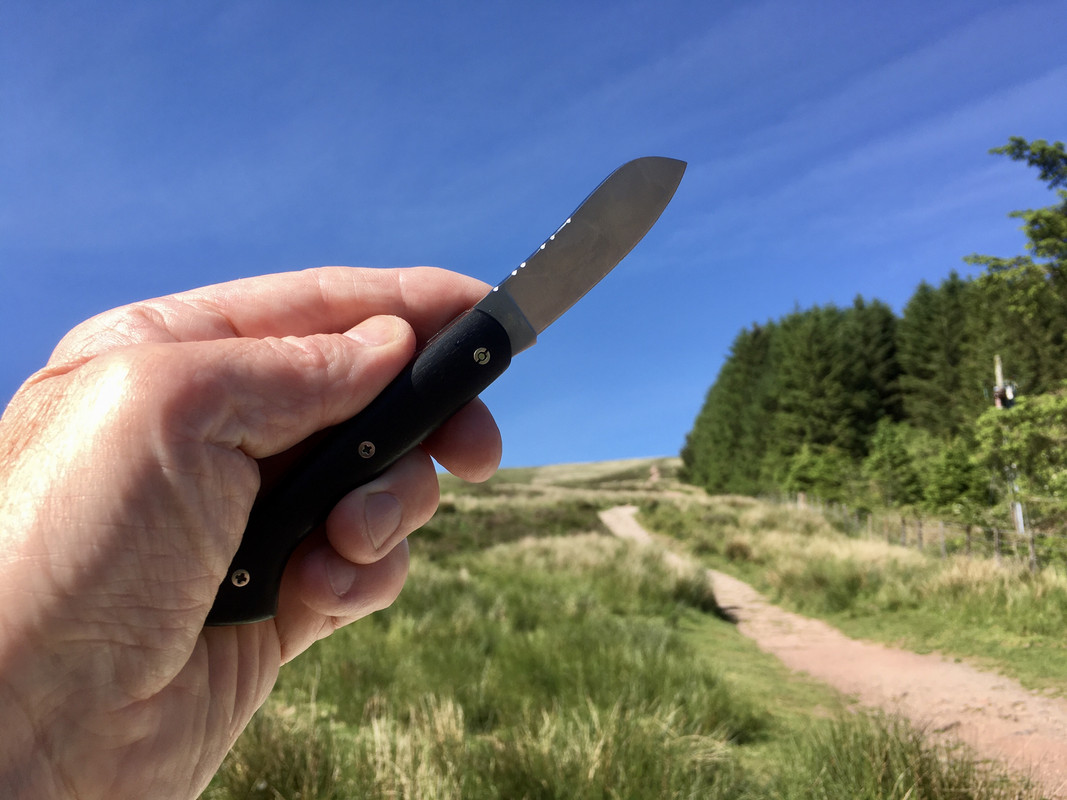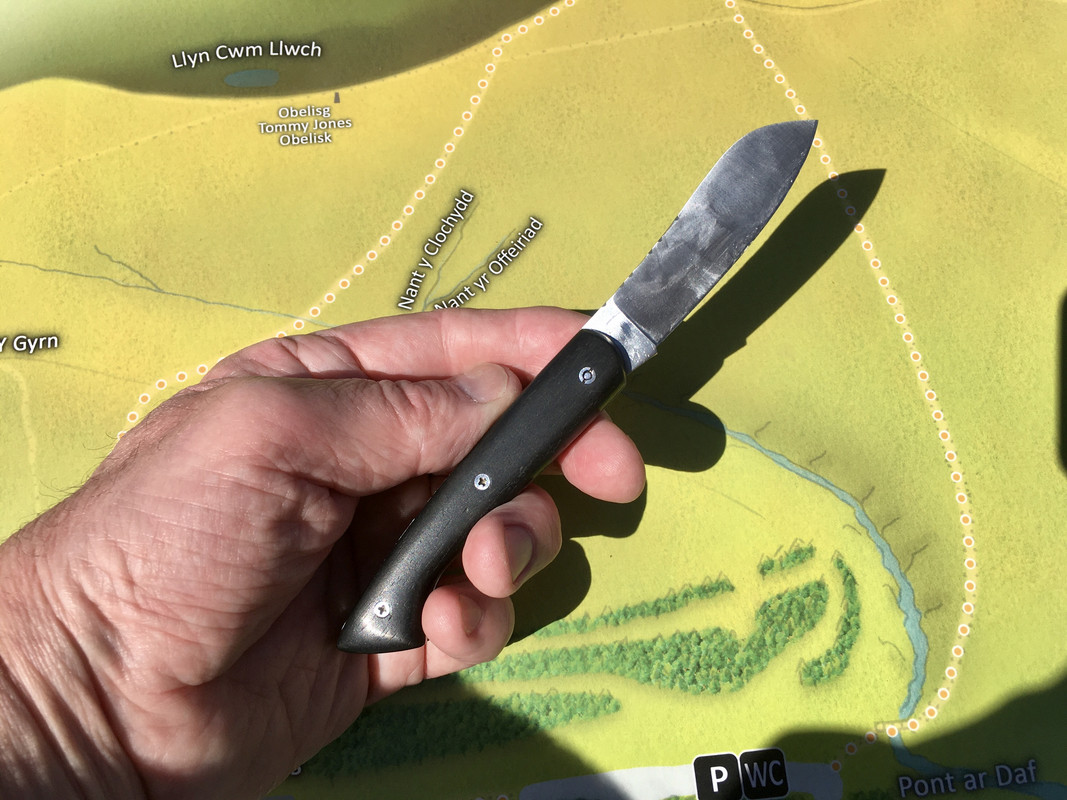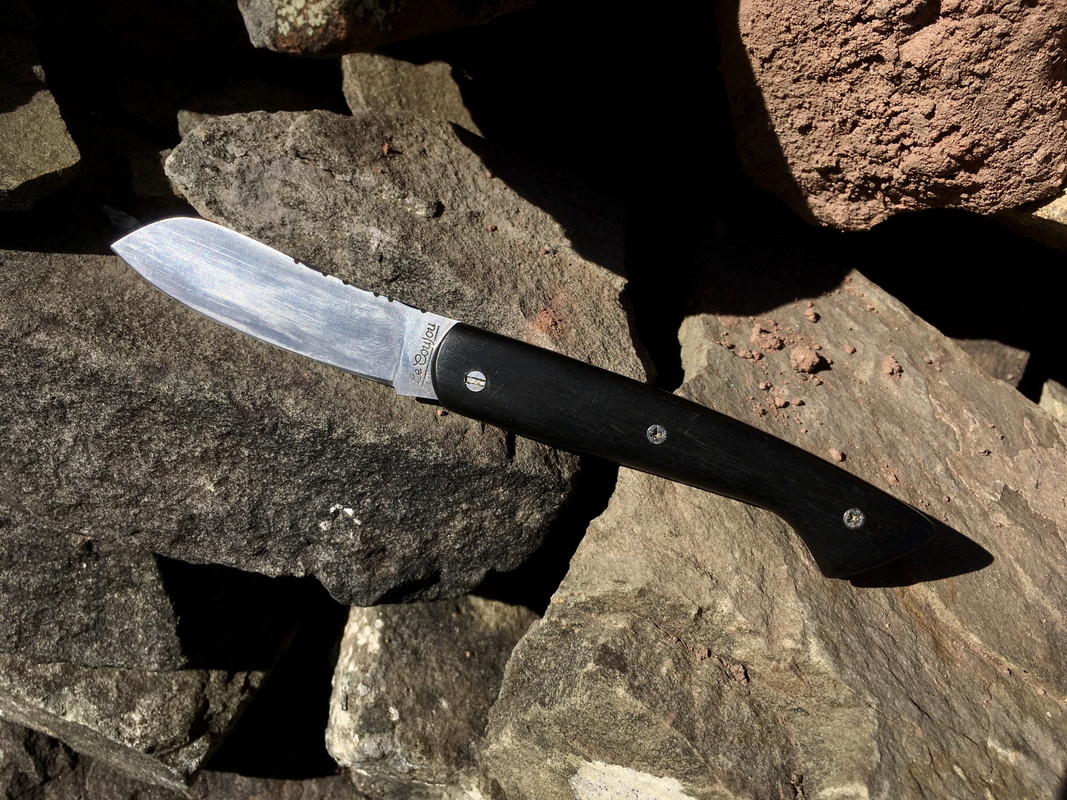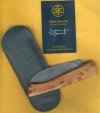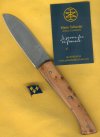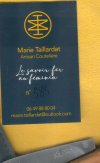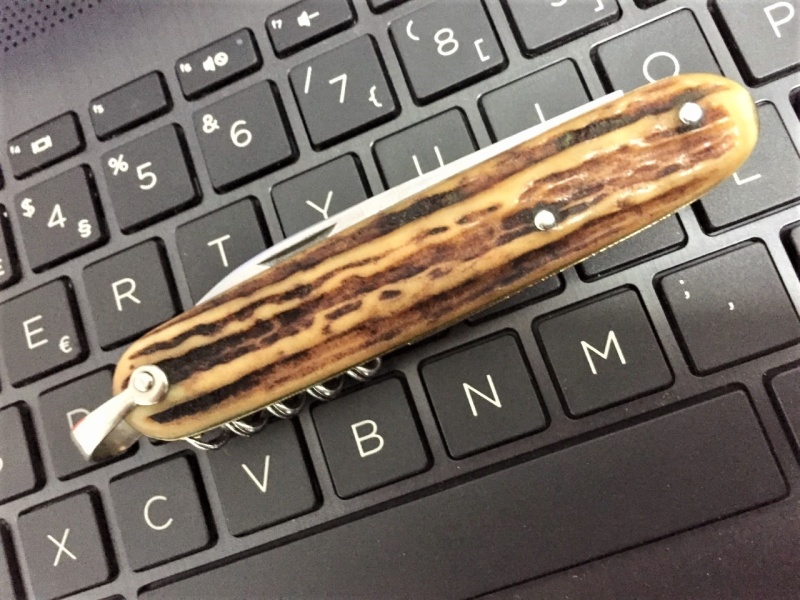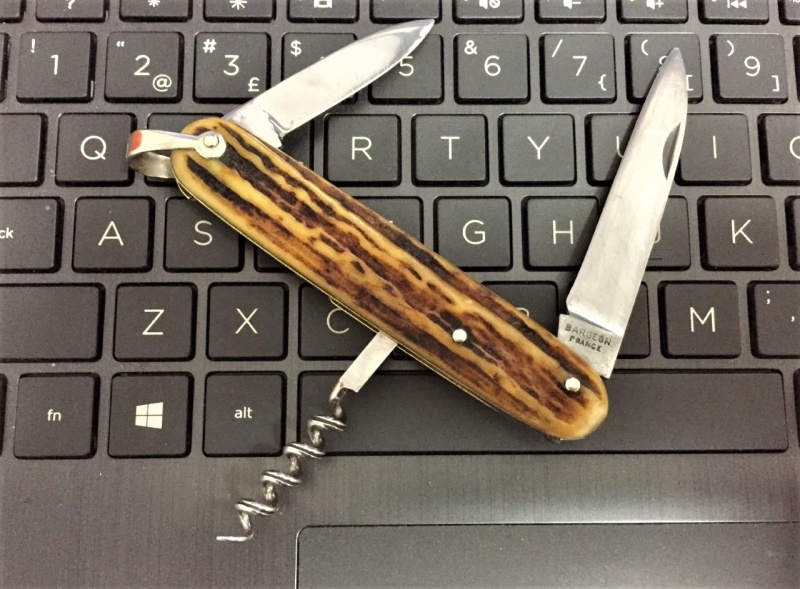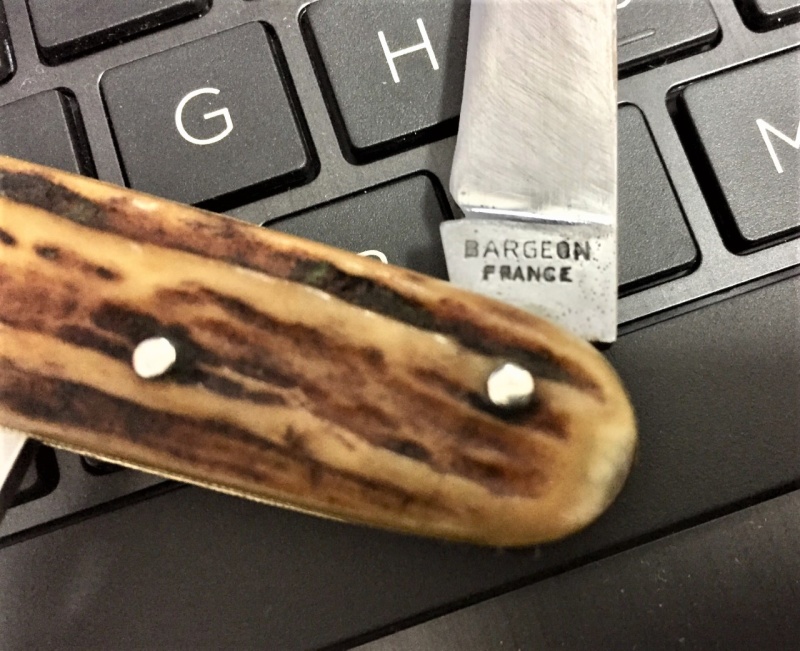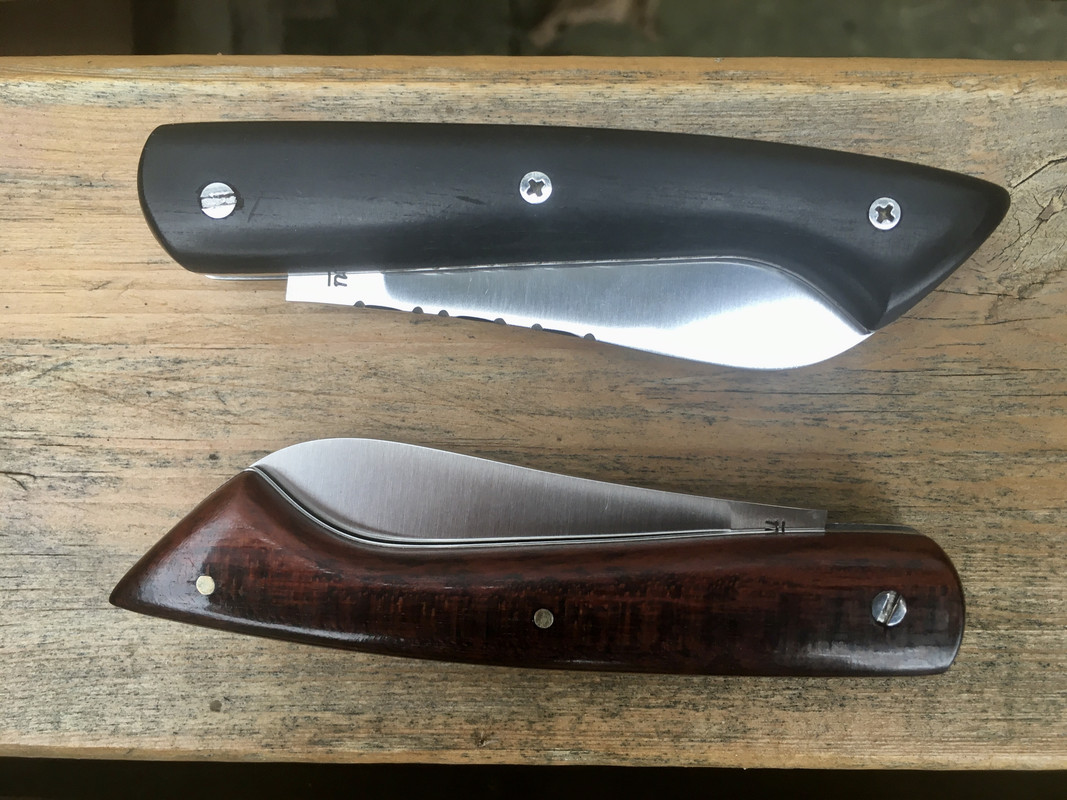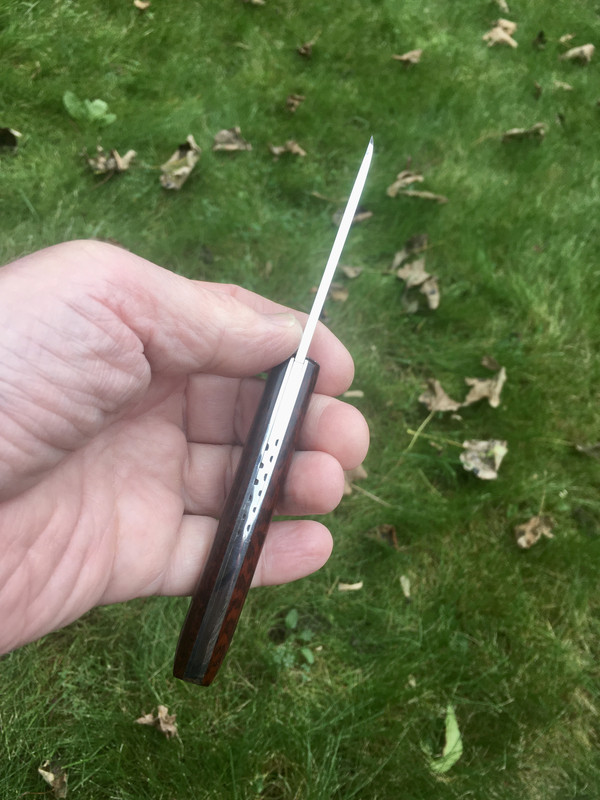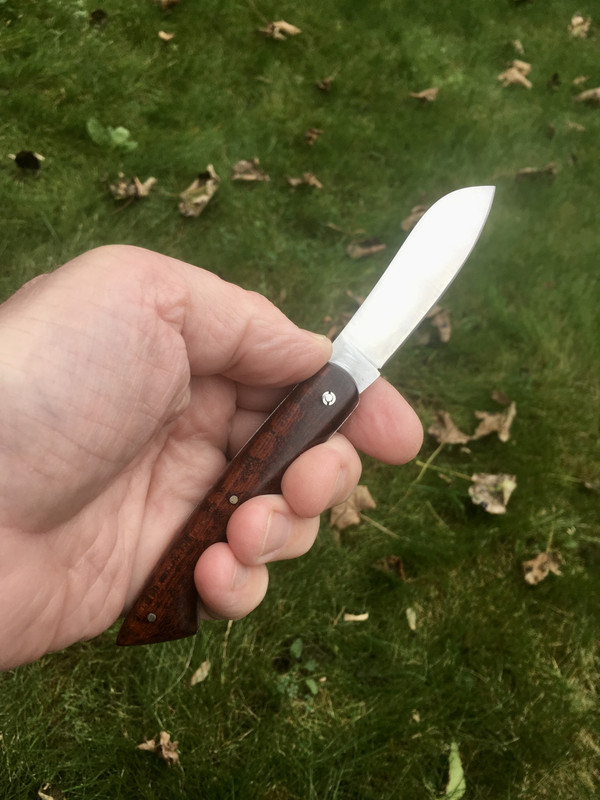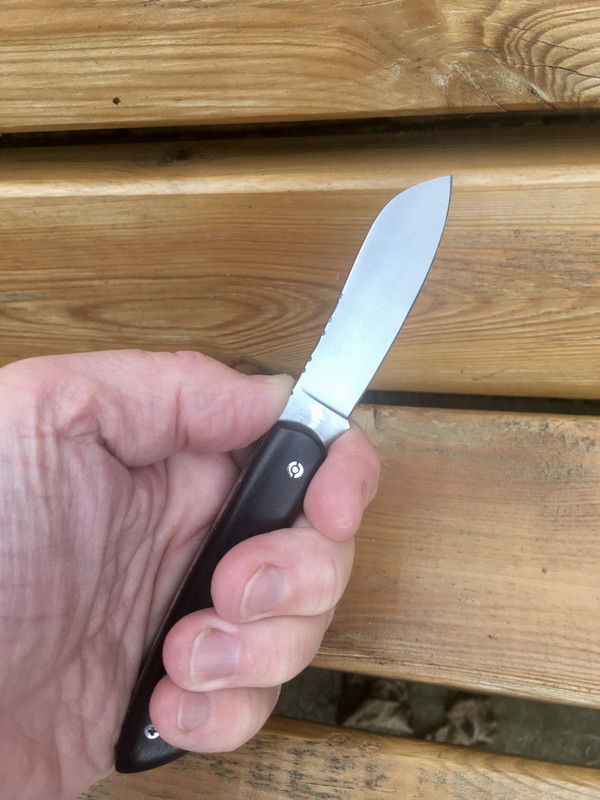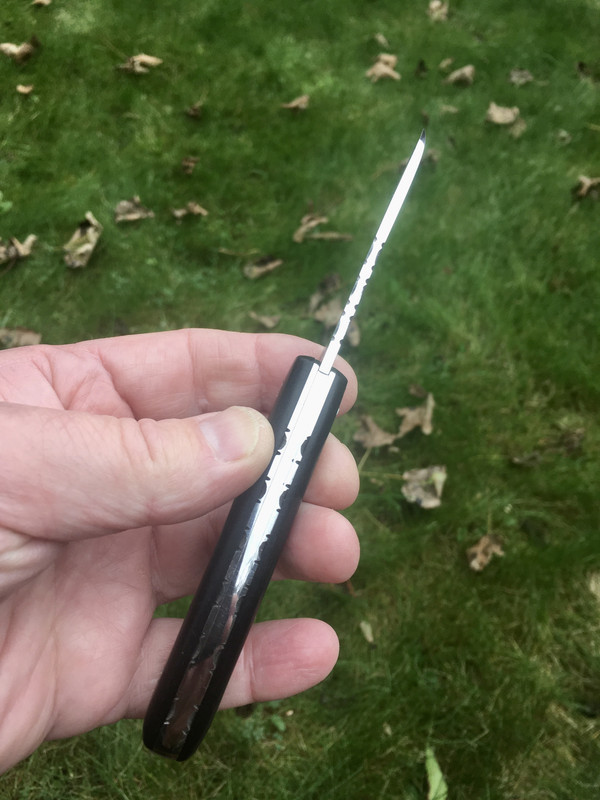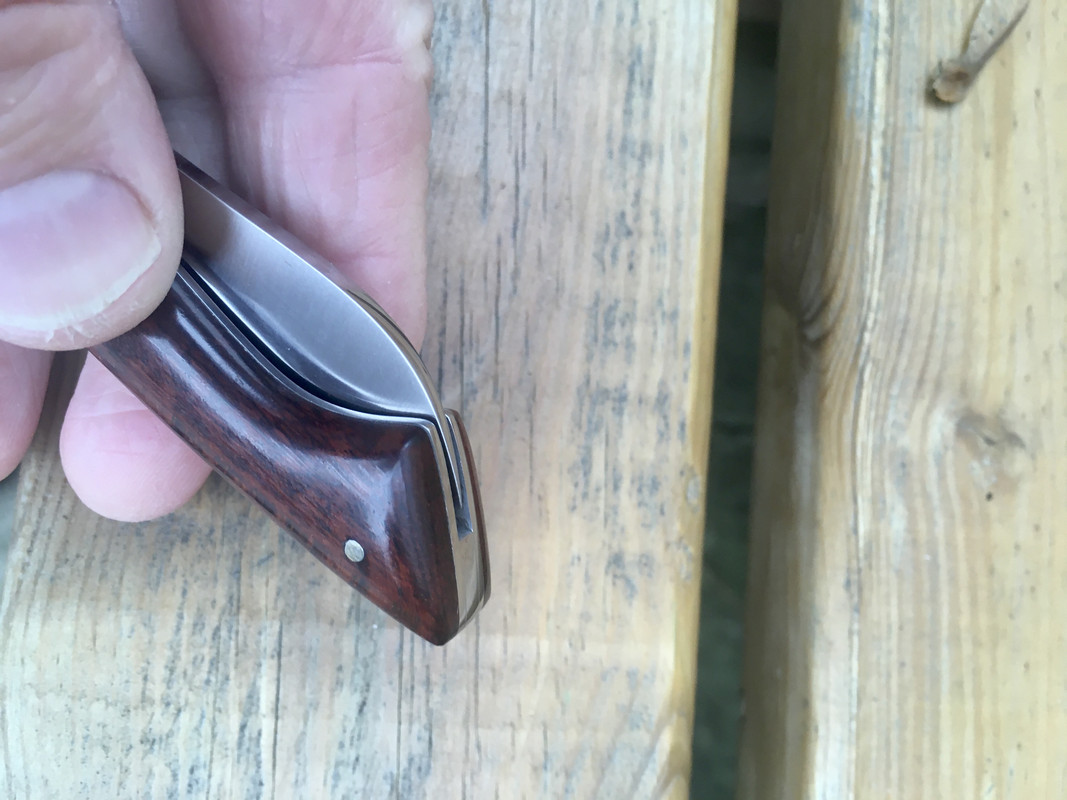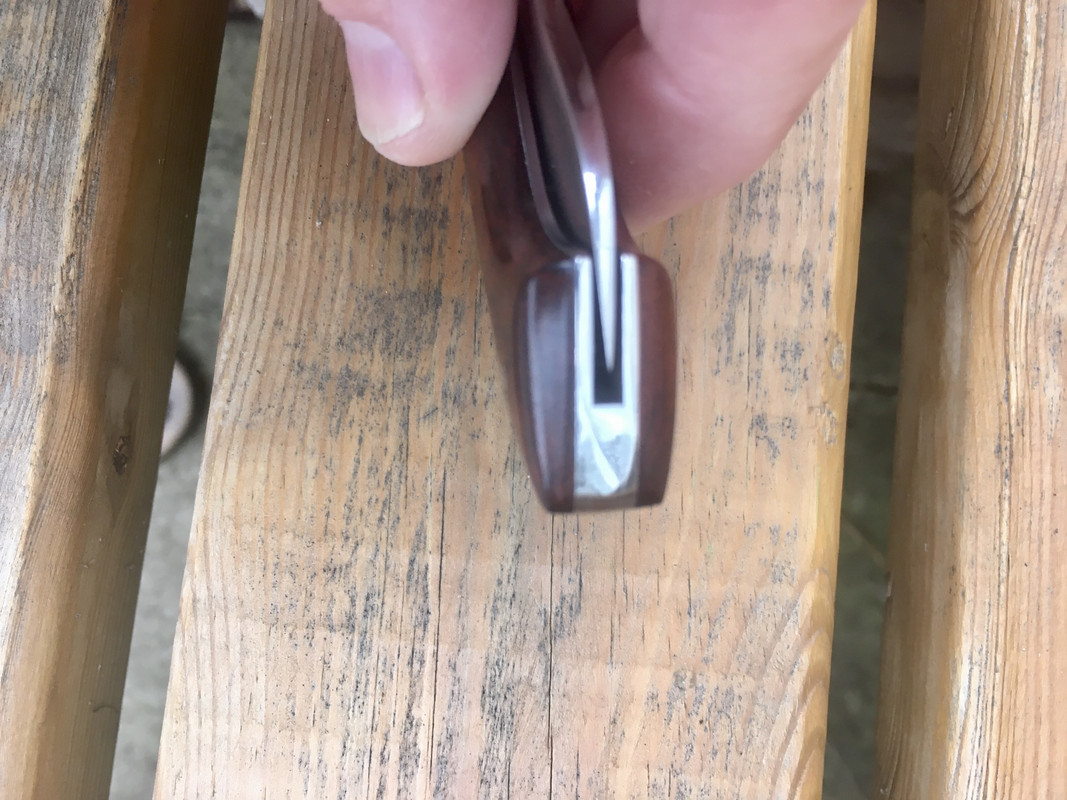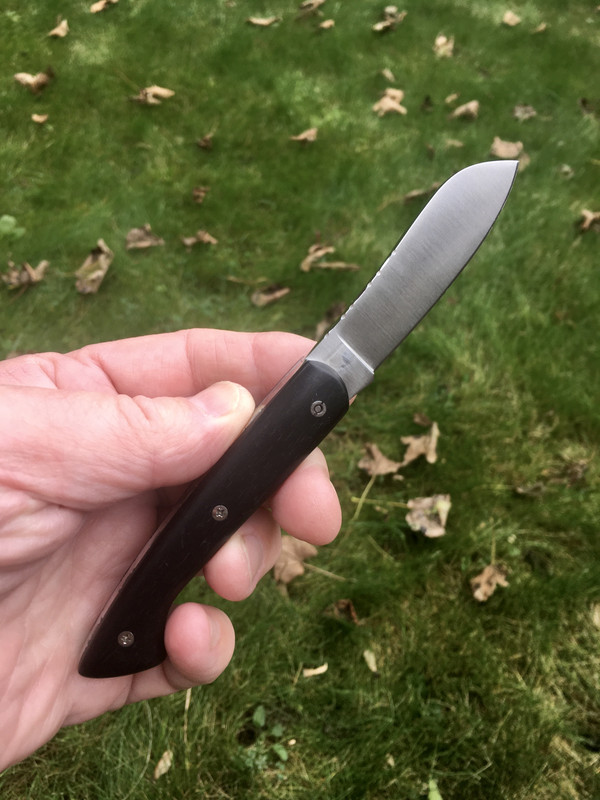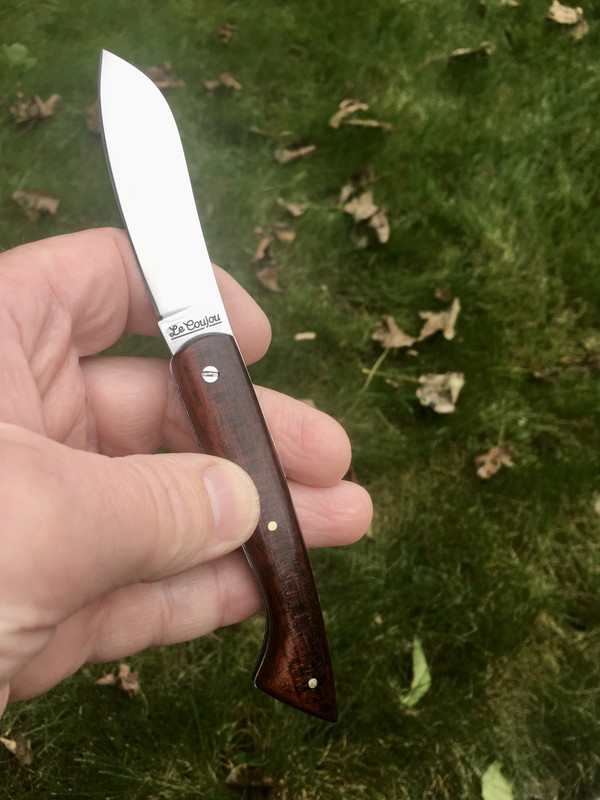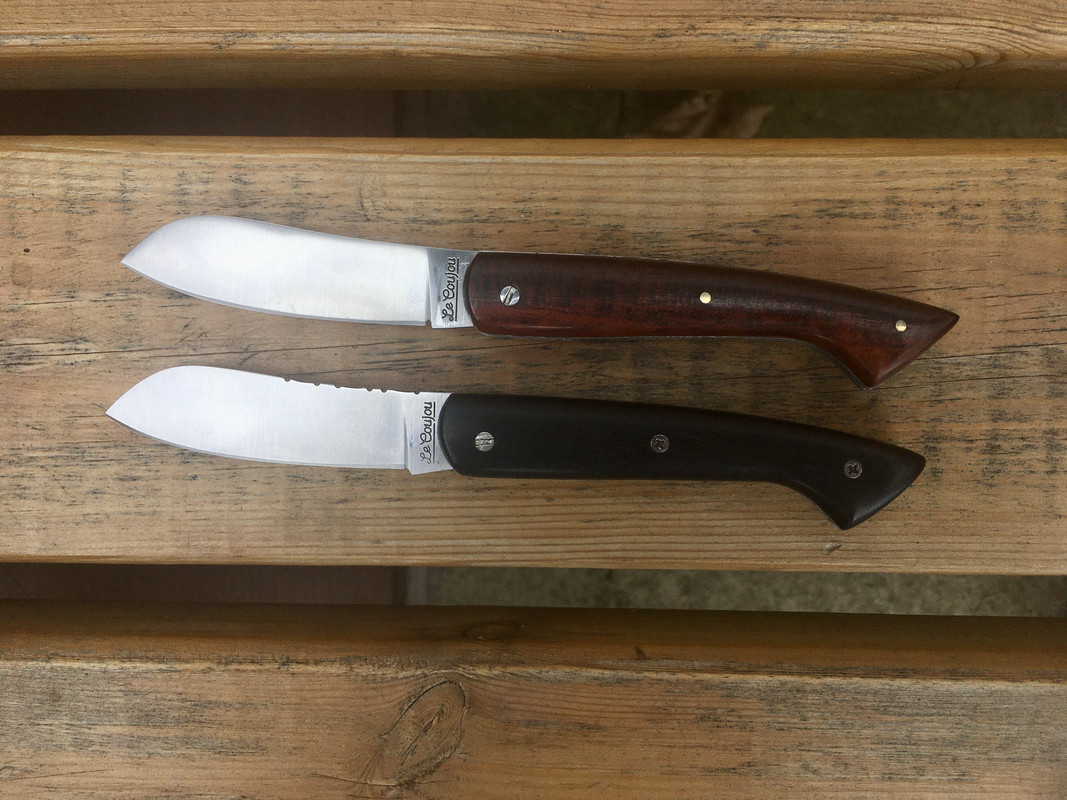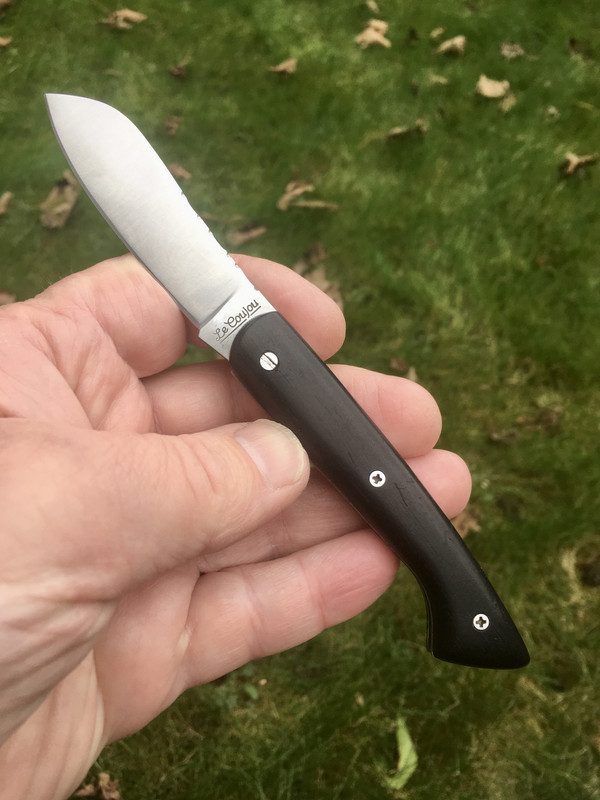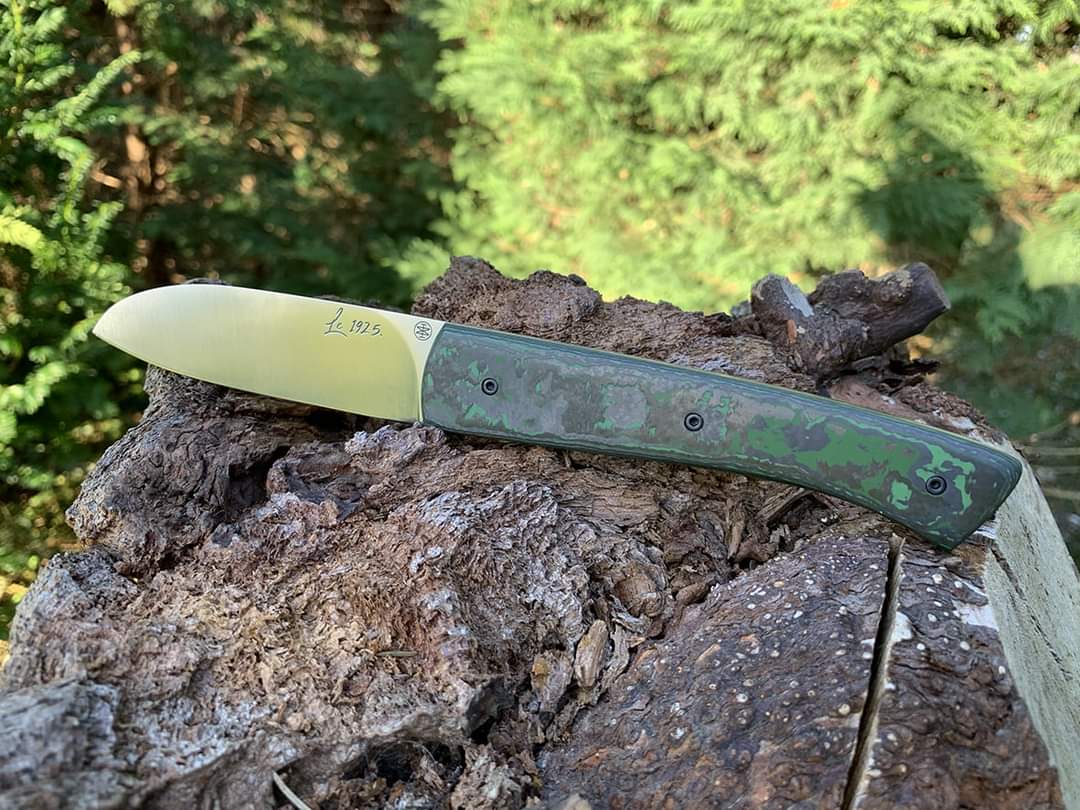I will post some photos of my favourite French knives in a Moment.
All my stuff seems to have a story behind it.
I was on my way from England to Biarritz via Le Havre to wheels and waves a motorcycle meeting.
My motorcycle broke down (its modified so I can ride it with injury's from the Army) Despite my protests the recovery took it to a Kawasaki dealer.
I couldn't get them to understand it was the non Kawasaki add ons that where in need of repair.
The shop couldn't help,after 3 days I was in despair trying to find a solution,so I took a walk around the town to get away from it all.
I avoided the 2 Irish pubs and came across a small knife shop.
Going in I found they had their own design of knife particular to that area.
After trying out every knife in the shop I left with a black one
I don't like fancy so was trying to find one with as little as possible.
Some where very expensive with bog oak and other exotic covers,but as I said I like plain.
A few years later I went back and bought the brown one and the larger version also in wood (I sold that one,as like many say the BSA DBD 32 is better balanced than the DBD34 I felt the same).
By then the original owner had retired and passed on the reigns to someone younger,I made sure the one I bough was made by the original owner for posterity.
As for my motorbike I got help from an Englishman living in France who effected half a repair as best he could,I then limped home on a most dangerous and difficult journey.
